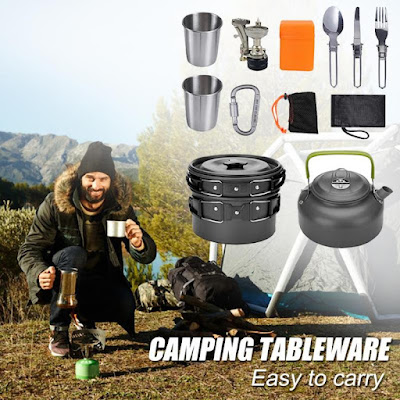Campfire Cooking Contest
Campfire Cooking Contest Unleashing Culinary Skills in the Great Outdoors
The crackling flames of a campfire the aroma of sizzling food and the laughter of friends gathered around—campfire cooking contests bring together outdoor enthusiasts with a shared passion for culinary exploration. This unique event combines the joys of camping outdoor cooking and friendly competition creating an unforgettable experience in the great outdoors. In this article we delve into the world of campfire cooking contests highlighting the importance of culinary skills popular camping recipes essential cooking techniques and resources for participants to enhance their outdoor cooking adventures.
Campfire Cooking Contest
Campfire cooking contests are the perfect stage for outdoor enthusiasts to showcase their culinary skills. Participants get to demonstrate their creativity adaptability and expertise in preparing flavorful meals using limited resources and the rustic setting of a campfire. Whether it's grilling Dutch oven cooking or mastering the art of foil packet meals these contests provide an opportunity to push culinary boundaries and elevate outdoor cooking to new heights. With friendly competition as motivation participants can challenge themselves and exchange ideas further honing their culinary abilities.
Delicious Recipes for Outdoor Delights
The realm of camping recipes is filled with delectable options that tantalize the taste buds and satisfy hungry adventurers. From hearty breakfasts to savory dinners and mouthwatering desserts there is a recipe for every outdoor occasion. Grilled meats and vegetables foil-wrapped delights campfire stews and skillet desserts are among the favorites in campfire cooking contests. The beauty of these recipes lies in their simplicity and versatility allowing for creativity and experimentation with flavors. Participants can impress the judges and fellow competitors with dishes like grilled peach and goat cheese salad Dutch oven chili campfire nachos and cast-iron skillet apple pie.
Mastering Campfire Cooking Techniques
To excel in a campfire cooking contest mastering essential campfire cooking techniques is crucial. Grilling over an open flame using cast-iron cookware and harnessing the power of Dutch ovens are essential skills that participants should acquire. Understanding heat management coal placement and the art of controlling temperatures in an outdoor setting is vital for achieving perfectly cooked meals. Moreover employing creative techniques such as skewering foil-wrapping and utilizing natural elements like rocks and leaves as cooking surfaces can enhance the flavors and presentation of the dishes.
Essential Outdoor Cooking Equipment
Equipping oneself with the right outdoor cooking tools and equipment is a key factor in a successful campfire cooking contest. Portable grills campfire grates cast-iron skillets Dutch ovens and reliable coolers are indispensable items for preparing and storing ingredients. Having proper campfire utensils food storage containers and camping stoves can make the cooking process smoother and more efficient. Outdoor cooking enthusiasts can explore reputable brands and find quality equipment tailored to their needs such as Weber (www.weber.com) for portable grills Camp Chef (www.campchef.com) for campfire cooking accessories and YETI (www.yeti.com) for reliable coolers.
Here are some tips to help you make a successful campfire
Choose the right location: Select a safe and designated area for your campfire. Look for a spot away from flammable materials such as dry grass overhanging branches or tents. Ensure that the location complies with local regulations and guidelines.
Clear the area: Clear the ground of any debris leaves or twigs within a 10-foot radius around the fire pit. This helps prevent the spread of embers and reduces the risk of accidental fires.
Build a fire pit or use an existing one: If there is no designated fire pit create one by digging a shallow hole and surrounding it with rocks. This helps contain the fire and provides a stable base for your campfire.
Gather the right materials: Collect dry twigs sticks and small branches as your primary fuel. Look for dead wood that snaps easily indicating it is dry. Additionally gather larger logs to sustain the fire once it's established.
Create a fire structure: There are various fire structures you can use such as the teepee log cabin or lean-to. The teepee structure is a popular choice for starting a fire as it allows air to circulate freely. Arrange the smaller twigs and sticks in a cone shape leaving an opening on one side for lighting.
Use fire starters: To make it easier to start your campfire bring along fire starters such as newspaper dry leaves or commercial fire starters. Place them in the center of the fire structure before lighting.
Light the fire: Use matches or a lighter to ignite the fire starters in the center of the fire structure. Once lit gently blow on the flames to provide oxygen and help the fire spread to the surrounding fuel.
Add fuel gradually: As the fire grows gradually add larger sticks and logs to keep it going. Avoid overcrowding the fire as it needs air circulation to burn effectively.
Maintain the fire: Once the fire is established maintain it by periodically adding fuel and adjusting the size of the flames to suit your needs. Keep a water source nearby such as a bucket of water or a fire extinguisher in case of emergencies.
Extinguish the fire properly: When you're done with the campfire ensure it is completely extinguished. Pour water over the fire stirring the ashes to cool them down. Continue this process until all the embers are cold to the touch. Remember never leave a fire unattended.


.webp)



